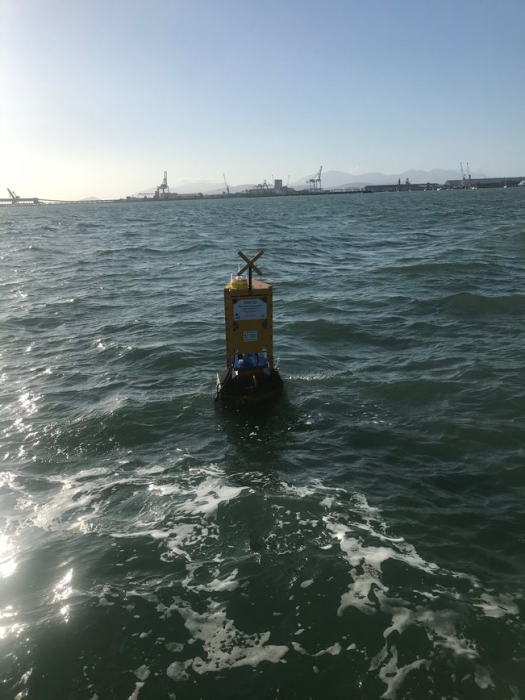





The Port of Townsville Limited (POTL) is undertaking the Channel Upgrade (CU) project at a cost of approximately $232 million. The CU project involves widening the existing entrance channel to the port through capital dredging activities to enable access for vessels up to 300 m (984.3 ft) in length. The existing channel of 92 m (301.8 ft) width will be widened to 180 m (590.6 ft) at the Platypus Channel (port end), tapering to 120 m (393.7 ft) offshore. The dredge material will be reclaimed within a ~62 hectare (~0.24 mi2) area immediately adjacent to existing port lands constructed of rock walls and revetments.
In July 2019, water-quality monitoring was begun at 13 different coral and sea-grass sites in Cleveland Bay and Halifax Bay to collect baseline data prior to dredging. POTL contracted with GHD Group to undertake the work. POTL transitioned to using telemetered sites in August 2021 to provide real-time data during the dredging for the purpose of minimizing potential impacts to sensitive receptors (that is, corals and seagrass).
GHD Group subcontracted with O2 Marine (O2M) and Campbell Scientific Australia (CSA) to build custom monitoring buoys with multiple water-quality instruments and sensors mounted to frames. This equipment on the substrate measures parameters required in accordance with project approval specifications and communicates that data. In addition, one intertidal telemetered site was established using a CSA weatherproof enclosure mounted to a pole above the water line with custom data cables that O2M provided. The water-quality instruments were provided by In-Situ Marine Optics (IMO) and the James Cook University (JCU) Marine Geophysics Laboratory.
Real-time monitoring required O2M and CSA to automate data quality control, processing, and post-hoc calculations so that raw data is compared with trigger levels designed to manage dredging activities for potential environmental impacts on sensitive receptors. The online data is presented and managed by O2M on their eagle.io Data Storage and Visualisation Platform (DSVP).
GHD Group was awarded the Tailwater Monitoring Program (TWMP) for the CU project in April 2021, and monitoring commenced the following month. The TWMP involves telemetered monitoring of marine water parameters within and immediately outside the reclamation area. GHD Group subcontracted with O2M and CSA to provide two custom-designed buoys, similar to those used for monitoring water quality on the dredging program, for deployment immediately outside the discharge pipeline from the reclamation area.
Within the reclamation area, CSA provided two telemetered weatherproof enclosures for mounting on poles sited above the bund of the reclamation pond. O2M supplied custom data cables to connect water-quality instruments inside the pond. One telemetered unit connects to a Vega radar water level mounted on a surveyed pole above the water line to measure changes in water height during spoil reclamation activities. This telemetered unit also connects to a surface Welabs photosynthetically active radiation (PAR) instrument.
The second telemetered site is mounted in front of the weir within the reclamation area. The site measures multiple water-quality parameters to manage acid sulphate soils and turbidity generation and to prevent potential environmental impacts in adjacent marine waters from reclamation-area discharges. Similar to the dredging program, real-time raw data was configured to automatically undergo quality-control processing and post-hoc calculations for comparison to trigger levels. O2M presents and manages the online data on their eagle.io DSVP.
Case Study Summary
Application
Water-quality measurementsLocation
Townsville, Queensland, AustraliaProducts Used
CELL220 CR310 CR300Contributors
David Spencer and Rex Keen, Campbell Scientific AustraliaParticipating Organizations
O2 Marine, GHD Group, Port of Townsville Limited, In-Situ Marine Optics, James Cook University Marine Geophysics Laboratory, Rhino DiveMeasured Parameters
Conductivity, temperature, pressure (depth), turbidity, pH, dissolved oxygen, Photosynthetically Active Radiation (multi-spectral), sediment deposition, radar water levelRelated Website
Port of Townsville Limited Channel Upgrade ProjectView the PDF